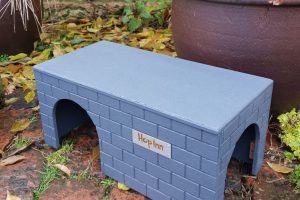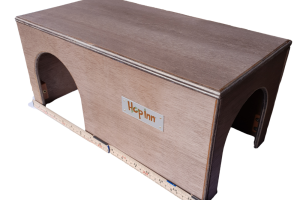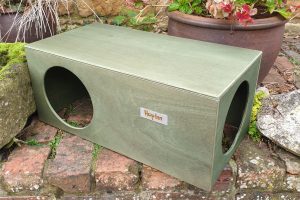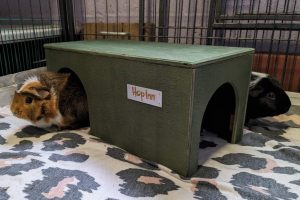I read this article which is a MUST read for all rabbit owners who use soft wood shaving either in their litter tray or hutch.
| The Dangers of Softwood Shavings George Flentke, Ph.D.
The use of pine and cedar as litter for house rabbits should be avoided. Other superior litters, such as recycled paper and aspen shavings are available and you should steer potential adopters and those who already have rabbits to these safer alternatives. There are two major concerns with the use of cedar and pine shavings as litter. The first is the documented alterations in the liver’s specialized tools, called enzymes, that can alter your rabbit’s ability to handle standard drugs that your vet will use in the treatment of your pet. The second is the relatively poorly characterized cancer risk. When you open a container of pine or cedar shavings you will instantly smell the “aromatic” nature of the litter. That smell is where the the problem lies. The odor is from the natural volatile chemicals in the wood called phenols. Thus one of your best detection methods for determining an unknown bag of shavings is your own nose! This odor, and the phenols that cause it, are not found to the same amount in hardwood shavings, thus hardwood shavings, aspen being one of the most common, are considered a much safer litter material and can be recommended for rabbits and other small animals. The phenols in the softwood (pine and cedar) shavings causes changes in the liver’s enzymes. Your rabbit’s liver tries to remove the phenols by producing more of certain enzymes that destroy these chemicals; this is a natural part of you and your rabbit’s defense against enviromental toxins. Our bodies always produces a low constant level of these protective agents; the problem occurs when constant exposure to pine phenols causes the rabbits to produce substantially larger quantities. The most characterized and potentially the most troublesome problem is that these enzymes are also used to remove drugs. Remember that removing drugs is just as important as their administration; we want the drugs to have the desired effects and then go away when we no longer need them, so knowing exactly how long they will be around is an important part of every drug’s action. If these enzymes are elevated, then the time a drug will be in the body and have the desired effect is much less than predicted. Some of the drugs affected are xylazine and ketamine, the most popular injectable anesthesias. Other important drugs include dexamethasone, theophylline and all of the opioid painkillers, such as butorphanol, that are commonly used for bunnies. In rodents, for example, constant exposure to phenol-containing litters reduced drug effectiveness by greater that 40%. This is the main objection to softwood litters. We as caretakers are always limited in what safe drugs we can use on rabbits, and decreasing their safety further by making them unpredicatable should be avoided if at all possible. The second objection to softwood shavings exposure as a cancer risk is less concrete. Epidemological studies in humans point to increase risks in people who work in saw mills, but the issue of volatile phenol involvement is not clear. Cedar shavings have caused increased risk for cancer in certain rodents, but in many ways this work was skewed by the nature of the experiment. Thus the evidence is, at best, only suggestive. Combined with the other health difficulties though, we should seriously question the use of pine and cedar in any litter for the pet industry. As a side issue, for those on the west coast, Ponderosa pine needles have been mentioned as alternative litter; this should be avoided at all costs. The material has caused spontaneous abortions in cattle and other domestic species and caused other hormonal disturbances.
|
|||||||
This is taken from the House Rabbit Society website |






